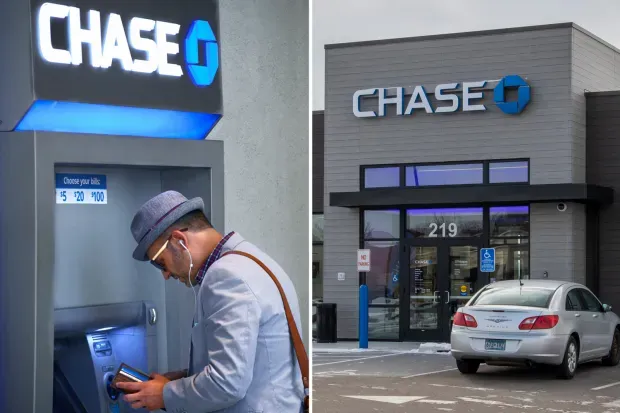Chase Bank Closures: What You Need to Know and How It Could Impact You
In recent weeks, a wave of concern has swept across the nation as news of Chase Bank closing multiple branches has gone viral. Social media platforms are buzzing with questions, rumors, and fears about what this means for customers, employees, and the broader banking landscape. Is this the beginning of a larger trend? What does it mean for your money? And most importantly, how should you prepare? Let’s break it all down.
Why Is Chase Closing Branches?
Chase Bank, one of the largest financial institutions in the United States, has announced the closure of dozens of branches across the country. While the news has sparked panic, the reasoning behind these closures is rooted in a shift that’s been years in the making: the rise of digital banking.
According to Chase, the decision to close branches is part of a broader strategy to adapt to changing customer behavior. With more people than ever opting for online and mobile banking, the need for physical branches has significantly decreased. In fact, a recent study found that over 70% of Americans prefer to manage their finances digitally, leaving many bank branches underutilized.
But it’s not just about customer preferences. Operating physical branches is expensive, and banks are under pressure to cut costs in an increasingly competitive financial landscape. By closing less profitable locations, Chase can redirect resources toward enhancing its digital platforms and investing in new technologies.
Chase has not released a full list of closures, but reports indicate that branches in urban, suburban, and rural areas are all affected. States like California, New York, Illinois, and Texas are seeing a higher number of closures, but no region is entirely immune. Customers are encouraged to check Chase’s official website or contact their local branch to confirm whether their location is impacted.
What Does This Mean for Customers?
For many, the closure of a local bank branch is more than just an inconvenience—it’s a disruption to their daily lives. Here’s how these closures could impact you:
Reduced Access to In-Person Services: If you rely on face-to-face interactions for tasks like depositing cash, withdrawing large sums, or discussing loans, you may need to travel farther to find an open branch.
ATMs and Cash Availability: While Chase has assured customers that ATMs will remain operational in many areas, some may be removed or relocated. This could be a significant issue for those who depend on cash transactions.
Job Losses: Branch closures often result in layoffs, leaving employees scrambling for new opportunities. While some staff may be reassigned to other roles, not everyone will be so lucky.
Impact on Small Businesses: Small businesses that rely on local branches for daily cash deposits or quick access to banking services may face challenges adapting to the changes.
Is This a Sign of Bigger Problems in the Banking Industry?
The short answer: not necessarily. While Chase’s branch closures are making headlines, they’re part of a larger trend in the banking industry. Over the past decade, banks nationwide have been reducing their physical footprints in favor of digital solutions. This shift has been accelerated by the COVID-19 pandemic, which forced many customers to embrace online banking for the first time.
However, some experts warn that the closure of bank branches could exacerbate financial inequality. Rural areas and low-income neighborhoods, where access to reliable internet and smartphones may be limited, could be disproportionately affected. For these communities, the loss of a local branch could mean fewer options for financial services.
What Can You Do to Prepare?
If your local Chase branch is closing, don’t panic. Here are some steps you can take to ensure a smooth transition:
Go Digital: Download the Chase Mobile app and familiarize yourself with its features. From depositing checks to transferring money, most banking tasks can now be done from your phone.
Find the Nearest Branch or ATM: Use Chase’s online locator tool to find the closest alternative branch or ATM.
Explore Other Banks: If the closures leave you without convenient access to banking services, it may be time to consider switching to a different bank or credit union that better meets your needs.
Stay Informed: Keep an eye on official announcements from Chase to avoid falling victim to misinformation or scams.
The Bottom Line
Chase Bank’s branch closures are a sign of the times, reflecting the rapid evolution of the banking industry. While the shift toward digital banking offers convenience and efficiency for many, it also raises important questions about accessibility and equity. As customers, it’s crucial to stay informed, adapt to changes, and advocate for solutions that ensure everyone has access to the financial services they need.
Whether you’re a Chase customer or not, this story serves as a reminder that the way we bank is changing—and it’s up to us to keep up. Share this article to spread the word and help others stay prepared!
What do you think about Chase’s branch closures? Are you affected? Let us know in the comments below!
